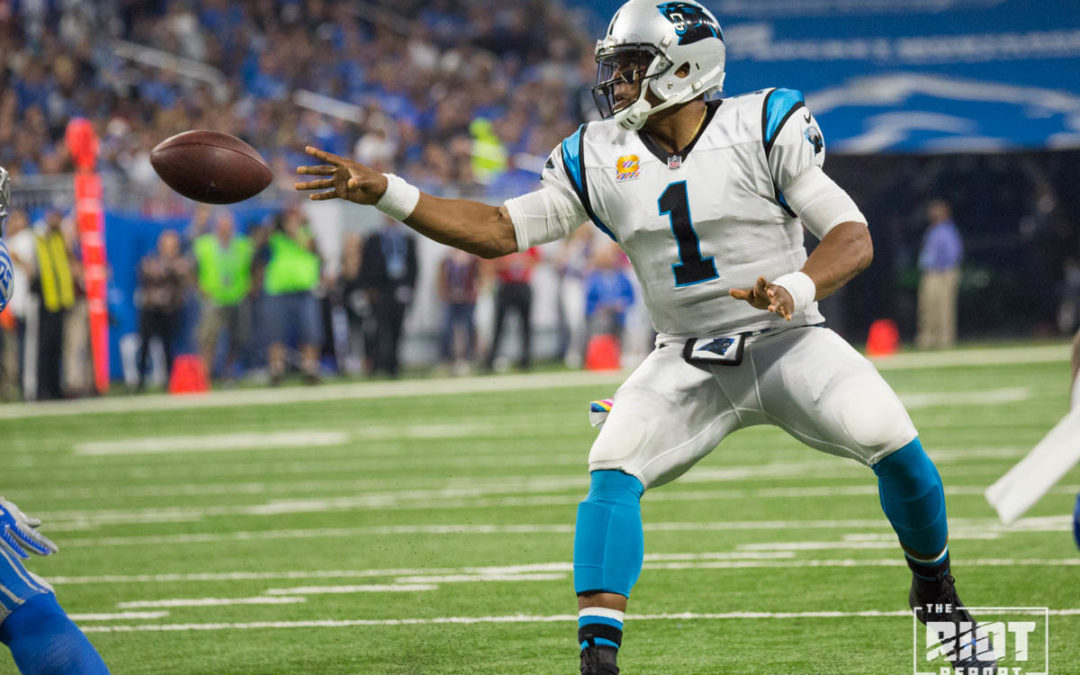While superficially the same sport, the NFL and college football are often worlds apart when it comes to the offensive schemes – however, from time to time, fragments of college offenses make their way into NFL playbooks and while some, such as the Wildcat, burst onto the NFL scene and fade away equally quickly, others have moved from gimmicks to mainstays of NFL offenses. In recent years, nothing has been more effective (or popular) in this regard than the option offense.
The Read Option
The core of the option offense is the basic read option, something that has been a feature of the Panthers’ offense for over half a decade and a core building block of many offenses around the NFL. This base concept can be seen in the following diagram:
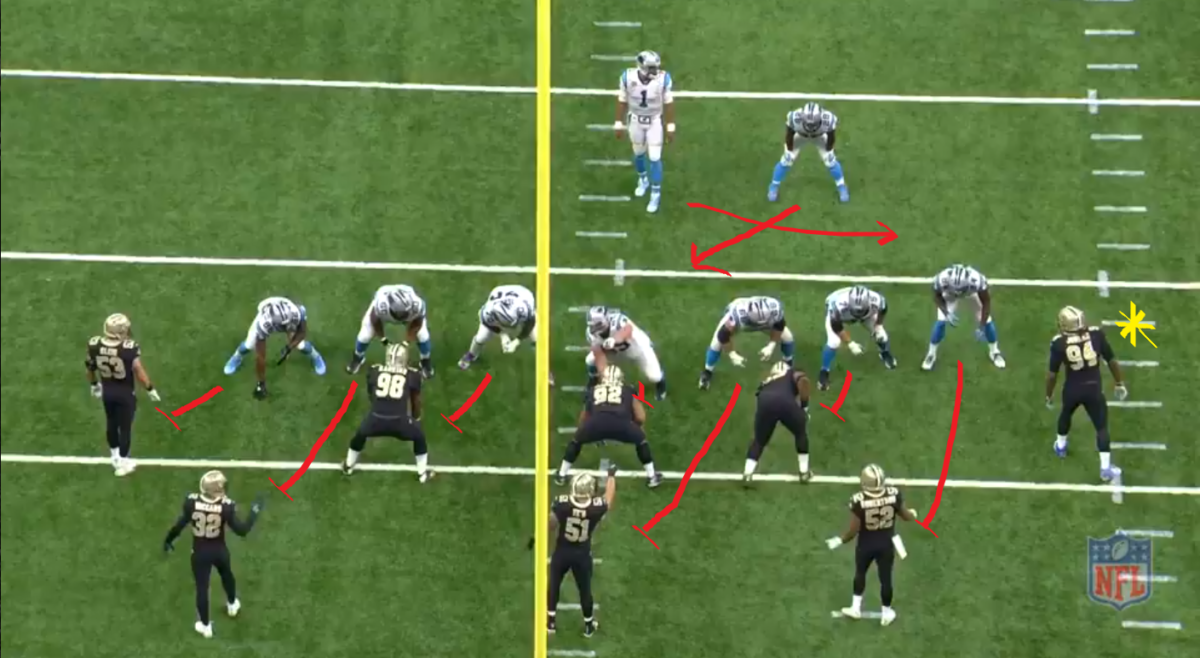
Here, the read defender is denoted by an asterisk and the offensive players actions by the red arrows. Should the defender hesitate (to counteract the possibility of the QB run), the quarterback hands the ball off to the running back, who should then be able to find a lane going away from the read defender; if the read defender looks to move towards the running back, then the quarterback keeps the ball and looks to attack the running lane outside of the read defender. This is best viewed at the read point:
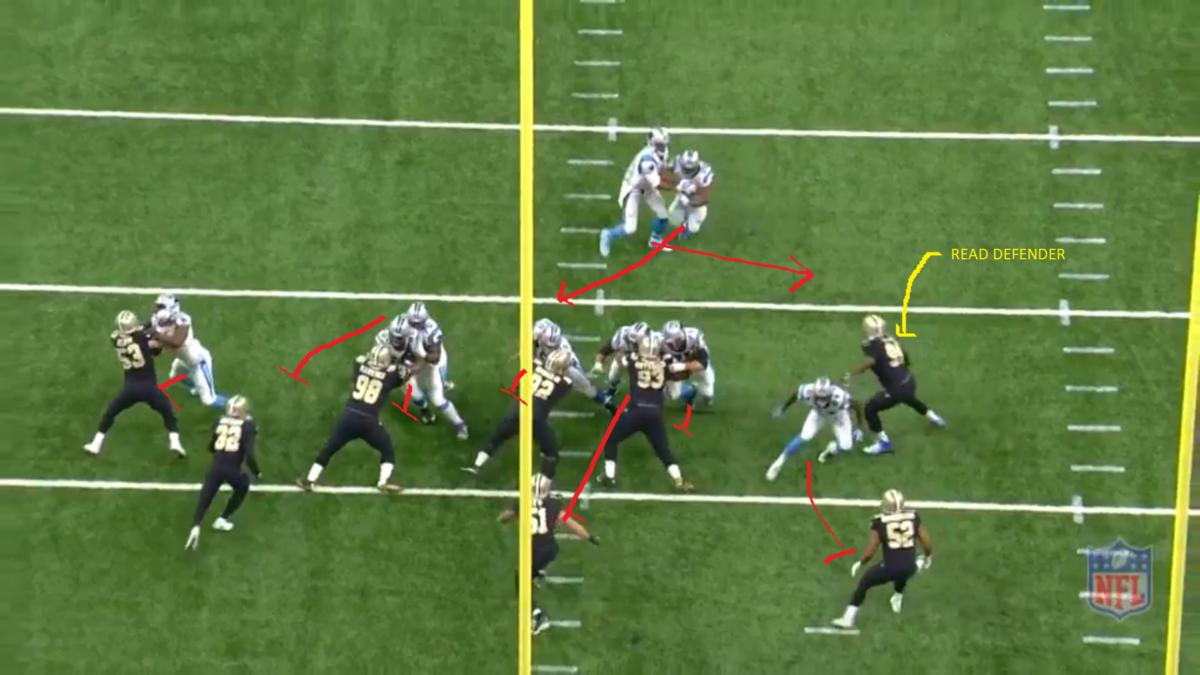
It can be seen from this image how the unblocked read defender is the focus of the run play, with his flat-footed stance hopefully leading the handoff to the running back. This principle is fairly simplistic, but in it’s various iterations, it can be the basis for a complex rushing attack. The advantages of the option attack should be fairly obvious from the above diagrams, with the involvement of the quarterback in the running game giving the Panthers a numerical advantage and the simplistic blocking scheme focusing on maintaining blocks rather than asking offensive linemen to push their respective defenders backwards.
Of course, as Chip Kelly demonstrated, NFL offenses cannot get away with running the same basic plays over and over again in the way that college offenses can. Because of this, NFL offenses which look to utilize the option attack have to find ways to incorporate this simple principle into similar, but subtly different plays. This is something that Mike Shula actually did quite well, with plays such as the following being subtle variations to the play described above:
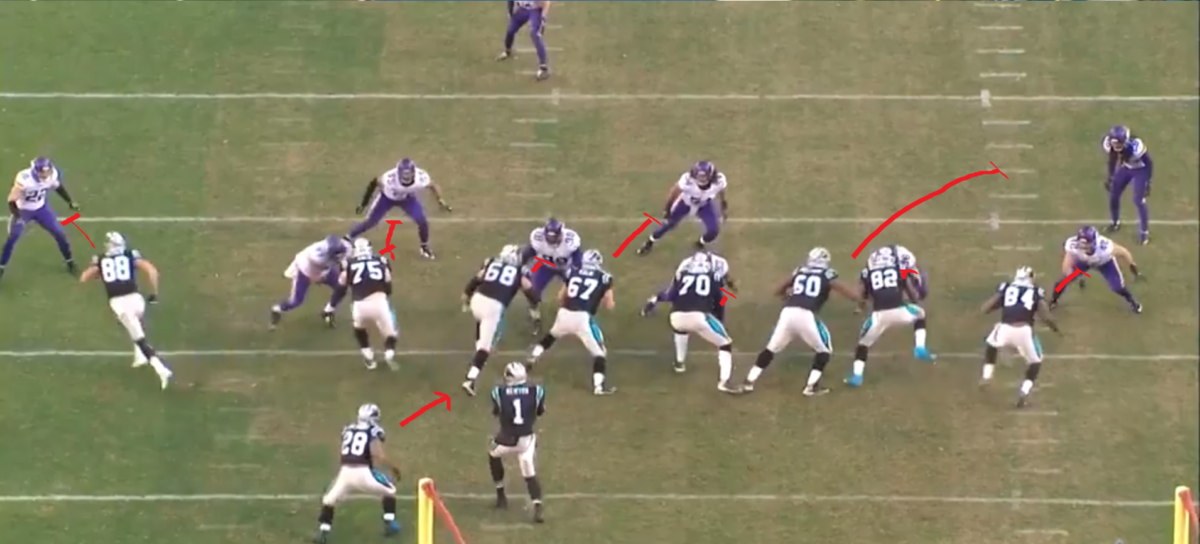
Most of this play is exactly the same as the one above, the majority of the offensive line is blocking away from the read side with Olsen kicking out the safety on the edge. The difference, however, is that Matt Kalil initially moves to block the read defender before bouncing his block to the linebacker. This not only creates a slightly different look for the defense, but also gives more time for the other blocks to develop before the handoff has to be made. This is clearer at the read point:
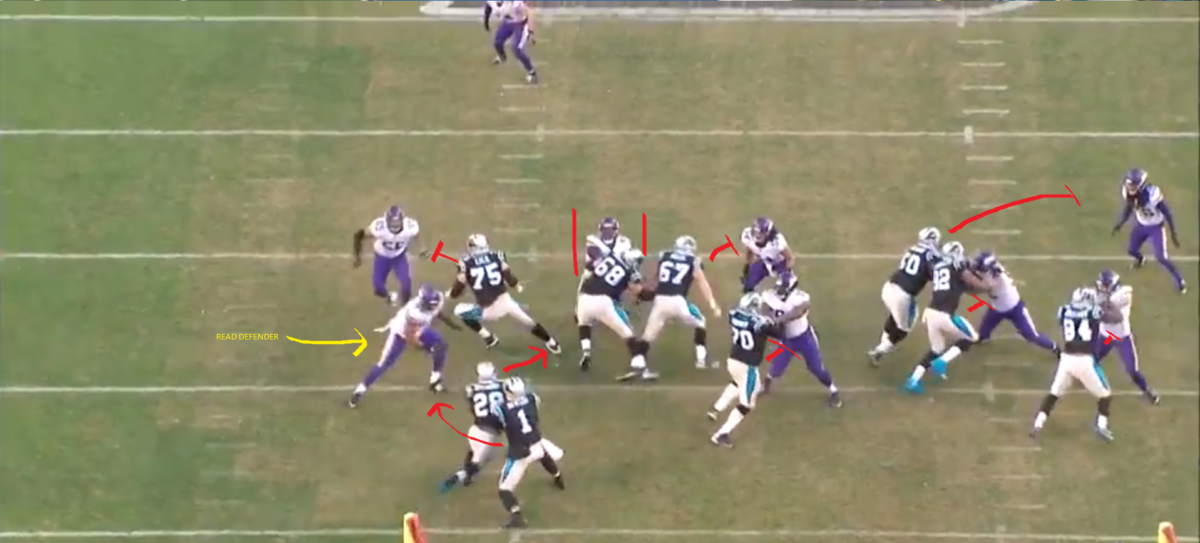
There are two things worth noting from this image compared to the earlier play: that Matt Kalil, having initially blocked down on the read defender, now looks to kick-out the linebacker to create an inside running lane and that rather than blocking either to one side or the other, Andrew Norwell is asked to hold the defender in front of him, allowing for Stewart to run inside of him if need be without giving up outside contain. This is not an easy block in the slightest and it is probably inadvisable to design a play which requires a block like this to be made – from the above image, the read defender can be seen to be going inside with the running back and so Newton is able to pull the ball and run inside Matt Kalil, with excellent results:
One of the issues that is often cited with the option offense is the number of hits that the quarterback receives when incorporated into the running game in this way. However, the plays are, or at least should be, designed so as to only give the quarterback the ball in open space, with the ability to slide to avoid contact if need be. For example, on the above play, as valuable as Cam’s long run was, he could easily have slid when he passed the first down marker and avoided any contact at all.
Modifications
Of course, if the read option worked this seamlessly every time there would be no need to run any other play, but defenses can and do look to counter this in a number of ways. One of the simplest is to shift the linebackers to the read side of the field. As the read is almost always on the side of the formation where the running back starts from this can be done with some success. Of course, if the defense commits in this way with sufficient time pre-snap, there are ways to take advantage of this alignment, with the most common being the use of jet sweeps, something that has been a seen a lot during the Panthers spring practices thus far.
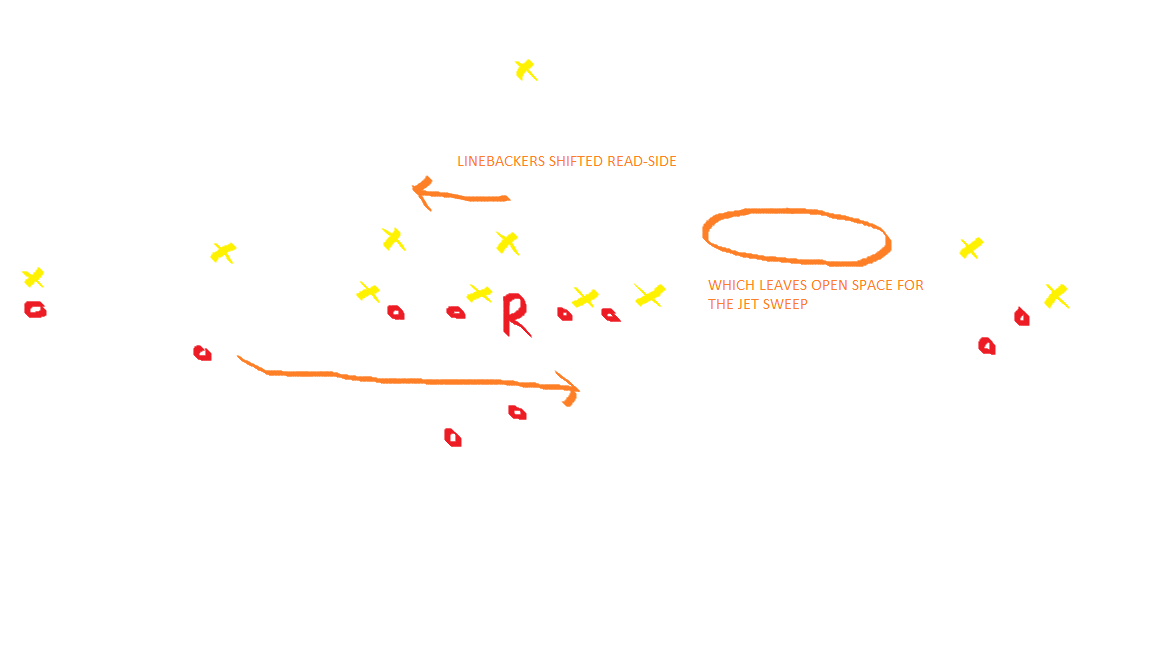
The advantage of attacking misalignments in this way is that it can be built into the play as a pre-snap read, something that looked to be the case on McCaffrey’s touchdown against the Lions:
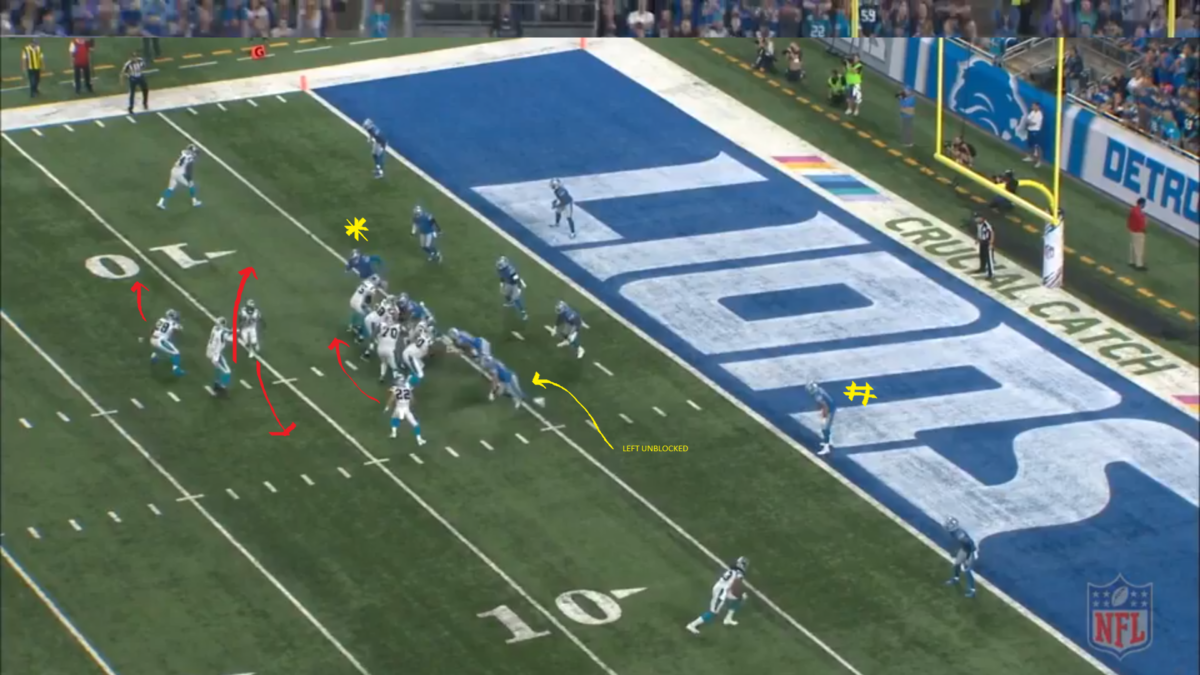
This play is effectively a quadruple option, with the first read being the jet option which is decided pre-snap as the far-side safety (denoted by #) is in position to cover the jet sweep. This then becomes a version of a triple option with the jet option also being used to bring the read-side defensive end (denoted by the asterisk), allowing for Turner to seal him off with a pull block. What this play also shows, however, is another issue with the option offense – when the game enters the red zone, the proximity of the safeties to the line of scrimmage turns the number advantage over to the defense:
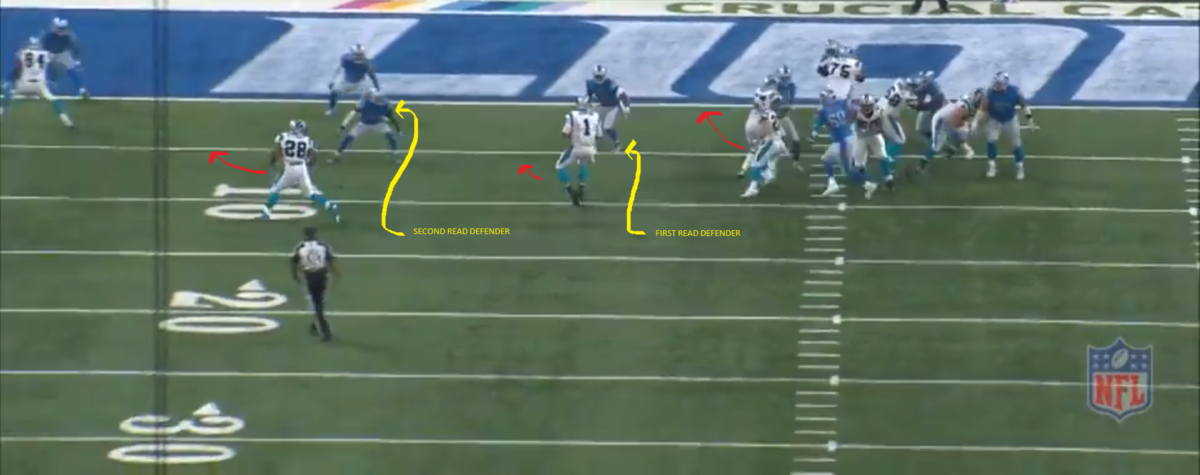
It can be seen from the above image how fortunate the Panthers were in terms of the confusion all the motion created in the Lions defense – it is only by the Lions doubling Stewart that McCaffrey is left free for the easy touchdown. As well as a noted increase in the number of jet sweeps, the Panthers’ practices so far this offseason have also featured another concept that was noticeably absent from the Mike Shula offenses of recent years but was used to great effect in the Rob Chudzinski offense of 2011-12: the triple option.

